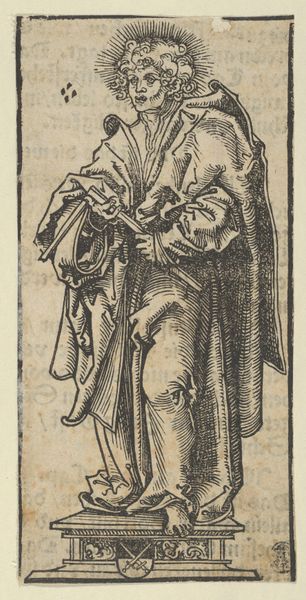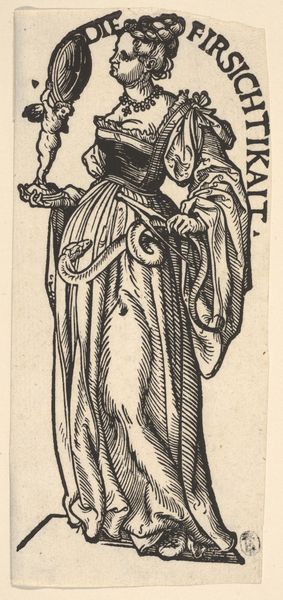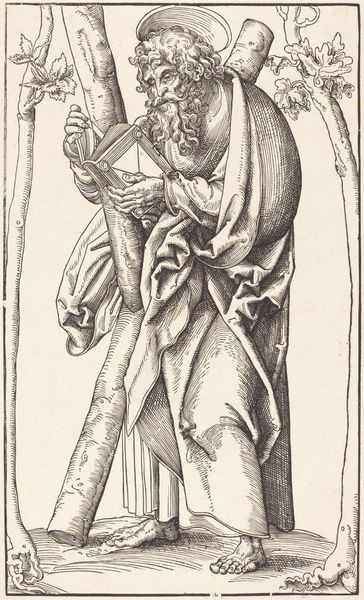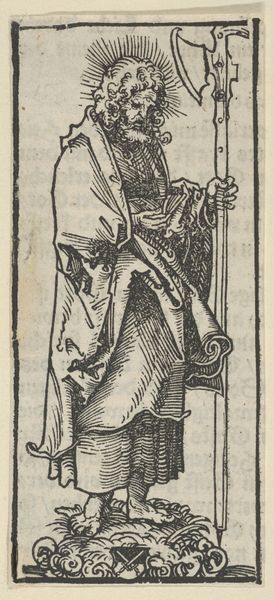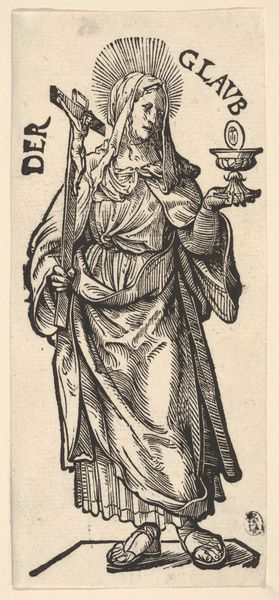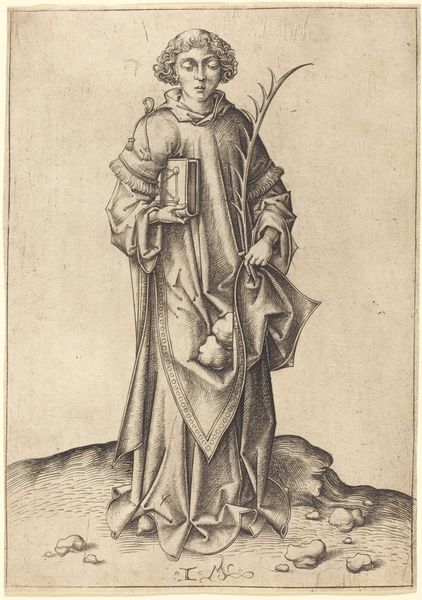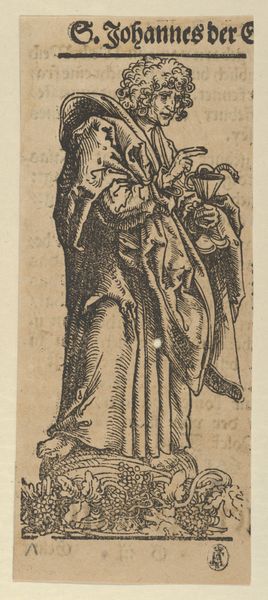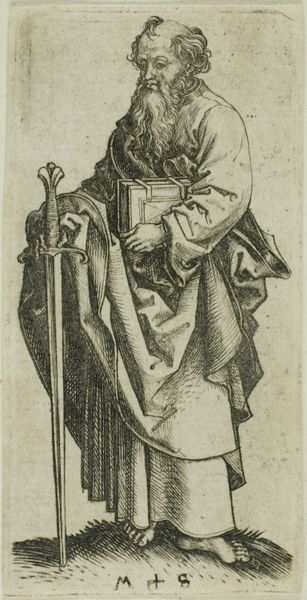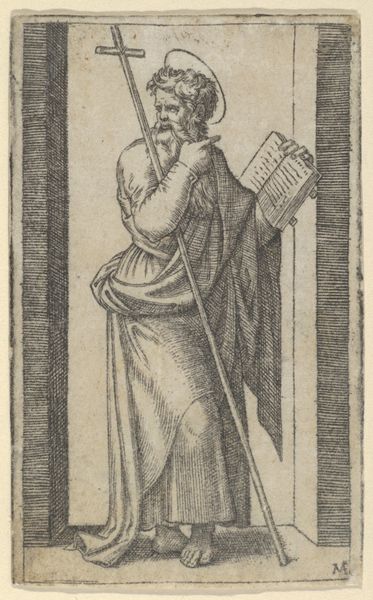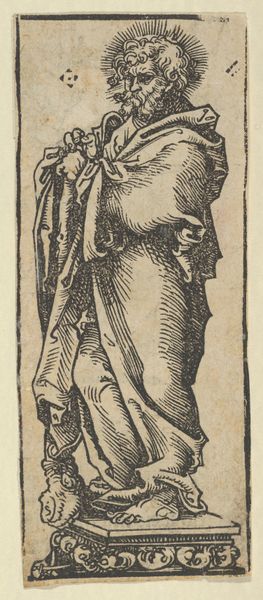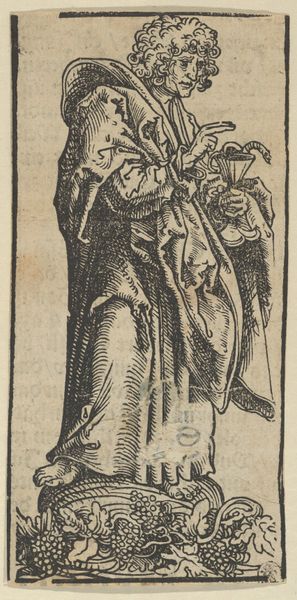
Charity (Die Liebe), from "The Seven Virtues" 1498 - 1531
0:00
0:00
drawing, print, woodcut
#
drawing
#
allegory
# print
#
figuration
#
child
#
woodcut
#
northern-renaissance
Dimensions: Sheet: 6 11/16 × 2 7/8 in. (17 × 7.3 cm)
Copyright: Public Domain
Editor: So, here we have Hans Burgkmair's woodcut, "Charity (Die Liebe), from 'The Seven Virtues'," dating back to around 1498-1531. It feels both familiar and foreign at the same time, with its intricate linework. What strikes me most is the...uncomfortable poses of the children. What do you see in this piece? Curator: Well, at first glance, we see a representation of Charity as maternal love, very much aligned with traditional iconography of the period. However, Burgkmair was working in a time of massive social upheaval – the Reformation was challenging existing power structures. I'd suggest that it's crucial to question how Burgkmair positions ‘charity’ within the changing societal landscape. What does it mean to portray it through the image of a bourgeois-looking Madonna figure and rather awkward children? Editor: I see your point. It does look less "divine" than other works portraying similar figures, perhaps pointing towards contemporary secular concerns rather than traditional ones. It seems deliberately human. Curator: Exactly. We could interpret it as a humanist representation emphasizing tangible support, the children are rather earthly rather than celestial, perhaps it represents earthly connections instead of heavenly connection through the church? What does "charity" mean when the established church's role in dispensing it is being challenged? How does it function when social mobility is limited by social roles and strict social hierarchy? And to whom does she give, and who is excluded from her embrace? It is really about "love"? Editor: That reframes everything. The choice of medium – a relatively accessible print – adds another layer, suggesting wider distribution and perhaps an attempt to influence public opinion beyond the elite. Curator: Precisely! It’s not merely a religious icon, it’s a social and political statement wrapped in familiar imagery, for consumption and debate by those literate and wealthy enough to consume prints. So, let's ask: is this charity or something else disguised as it? Editor: This makes me rethink the role of art beyond just aesthetics or religious devotion. It becomes a powerful tool for navigating social complexities. Thanks for the eye-opener. Curator: My pleasure! Remember, art is always in dialogue with its time. Exploring those intersections helps us truly understand its enduring power and also the unequal structure undergirding it.
Comments
No comments
Be the first to comment and join the conversation on the ultimate creative platform.
